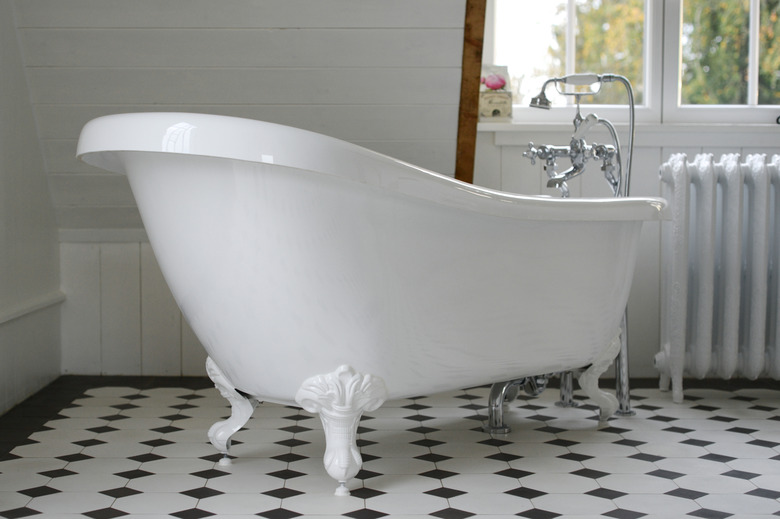How To Remove Paint From A Cast Iron Tub
We may receive a commission on purchases made from links.
An older bathtub can start to look dirty and dingy with age. Even if your bathtub is clean, an older paint job or a failed refinishing coating can ruin the effect and make your tub seem undesirable to use. Cast-iron tubs can be very expensive, so replacing them may not be feasible.
If you have a cast-iron tub that's looking a little worse for wear, you can refinish your tub. Cast-iron tubs are usually finished with a layer of porcelain enamel that is baked onto the metal; this cannot be removed like paint or added coatings. But if you have an older cast-iron tub that has been painted before, it may be that you need to start your refinishing process by fully removing this older, failed layer of paint. Saving your cast-iron tub from the landfill is better for the environment, and it can save you money and minimize renovation disruptions.
1. Clean Your Cast-Iron Tub
1. Clean Your Cast-Iron Tub
The first step in removing the old paint from your cast-iron tub is to give the entire tub a thorough cleaning. Scrubbing the surface of your tub with a mild detergent like dish soap and a slightly abrasive sponge can help remove the majority of the built-up residue. Properly cleaning your bathtub can also help you to better assess the condition of the surface.
2. Ensure You Have Safety Gear and Take Precautions
2. Ensure You Have Safety Gear and Take Precautions
Chemical paint strippers tend to be very harsh products that must be used with caution. Make sure you cover any decorative trim in your tub with masking tape to protect it from the stripper. After removing all old caulking, you should also apply this tape down the sides of your tub, to protect the room's walls or other surrounding surfaces.
You must also wear the correct safety gear when working with paint stripper, including protective gloves, goggles, a respirator and a long-sleeved shirt. Keep your bathroom well ventilated by opening the door and any windows in the room and using a fan to pull the vapors outdoors, if possible.
3. Apply the Chemical Stripper
3. Apply the Chemical Stripper
First, apply your chemical paint stripper using a brush or paint sponge. Stripper is unlikely to be able to lift the paint entirely — but once the coating starts to bubble, this is a sign it should be soft enough to begin scraping off.
Following the waiting time indicated on the product directions, allow enough time for the stripper to work. You can then use a drywall knife or razor scraper to begin removing the paint, along with the stripper.
If you're struggling to remove your paint using your scraper, sandpaper can help. Take it over any areas where the old paint layer is more stubborn to help lift it from your cast-iron tub's surface.
4. Remove the Paint Layer
4. Remove the Paint Layer
The scraped paint you have removed from your tub will remain dangerous for a while afterward. This is because it'll still retain the toxic ingredients of the stripper. Collect all your scrapings and wrap them in plastic sheeting. Double-bag the sheeting and keep it outside your home. Dispose of the bags safely.
5. Repeat the Process
5. Repeat the Process
It's likely for many cast-iron tubs that one treatment with paint stripper won't get off all the paint. If this is the case, you'll have to repeat the chemical stripping process at least one more time. Sand areas of residual paint and wipe the tub clean to finish.
